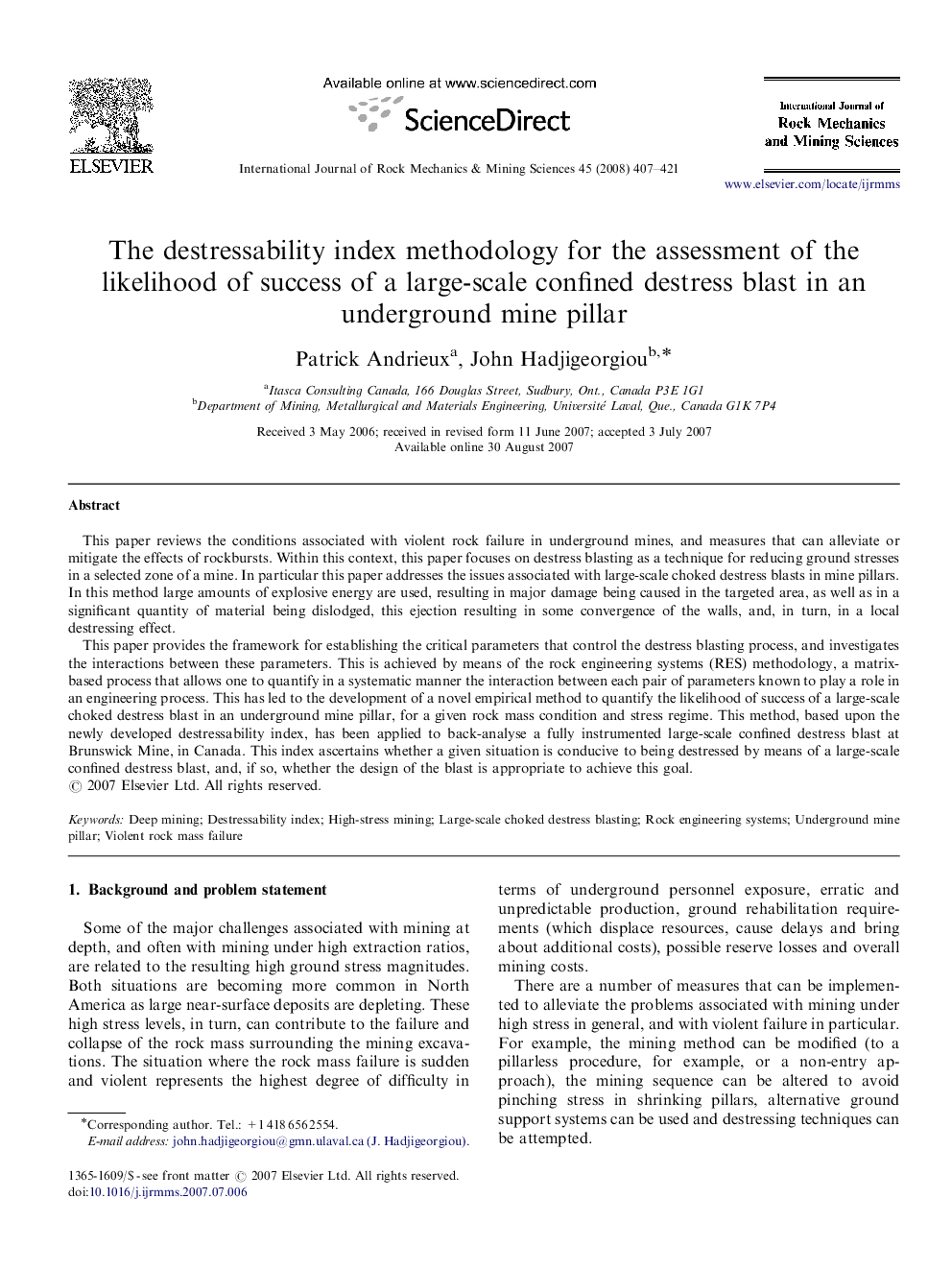| Article ID | Journal | Published Year | Pages | File Type |
|---|---|---|---|---|
| 810176 | International Journal of Rock Mechanics and Mining Sciences | 2008 | 15 Pages |
This paper reviews the conditions associated with violent rock failure in underground mines, and measures that can alleviate or mitigate the effects of rockbursts. Within this context, this paper focuses on destress blasting as a technique for reducing ground stresses in a selected zone of a mine. In particular this paper addresses the issues associated with large-scale choked destress blasts in mine pillars. In this method large amounts of explosive energy are used, resulting in major damage being caused in the targeted area, as well as in a significant quantity of material being dislodged, this ejection resulting in some convergence of the walls, and, in turn, in a local destressing effect.This paper provides the framework for establishing the critical parameters that control the destress blasting process, and investigates the interactions between these parameters. This is achieved by means of the rock engineering systems (RES) methodology, a matrix-based process that allows one to quantify in a systematic manner the interaction between each pair of parameters known to play a role in an engineering process. This has led to the development of a novel empirical method to quantify the likelihood of success of a large-scale choked destress blast in an underground mine pillar, for a given rock mass condition and stress regime. This method, based upon the newly developed destressability index, has been applied to back-analyse a fully instrumented large-scale confined destress blast at Brunswick Mine, in Canada. This index ascertains whether a given situation is conducive to being destressed by means of a large-scale confined destress blast, and, if so, whether the design of the blast is appropriate to achieve this goal.
